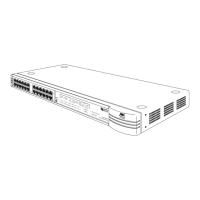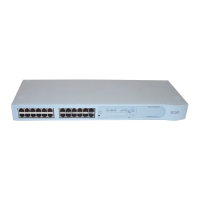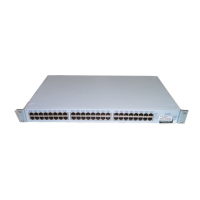Configuring the Stack 73
Databases entries can have three states:
■
Learned
— The stack has placed the entry into the Switch Database
when a packet was received from an endstation:
■
Learned entries are removed (aged out) from the Switch Database
if the stack does not receive packets from that endstation within a
certain period of time (the
ageing time
). This prevents the Switch
Database from becoming full with obsolete entries by ensuring
that when an endstation is removed from the network, its entry is
also removed from the database. For information about setting the
ageing time, see “Configuring the Advanced Stack Settings”
on
page 76
.
■
Learned entries are also removed from the Switch Database if the
stack is reset or powered-down.
■
Non-ageing learned
— If the ageing time is set to 0 seconds, all
learned entries in the Switch Database become non-ageing learned
entries. This means that they do not age, but they are still removed
from the database if the stack is reset or powered-down. For
information about setting the ageing time, see “Configuring the
Advanced Stack Settings” on page 76.
■
Permanent
— The entry has been placed into the Switch Database
using the Switch Database page. Permanent entries are not removed
from the Switch Database unless they are removed using the Switch
Database page or the stack is initialized.
Displaying the Switch Database
The Display Database Entries table on the Switch Database page displays
the Switch Database entries for the stack:
■
Unit
1 / 2 / 3 / 4
Displays the Switch unit in the stack that contains the port for the
entry.
■
Port
Displays the port for the entry.
■
VLAN
1 ... 16
Displays the local ID of the VLAN for the entry.
■
MAC Address
Displays the MAC (Ethernet) address for the entry.
■
Status
Learned / Permanent
Displays the state of the entry.
